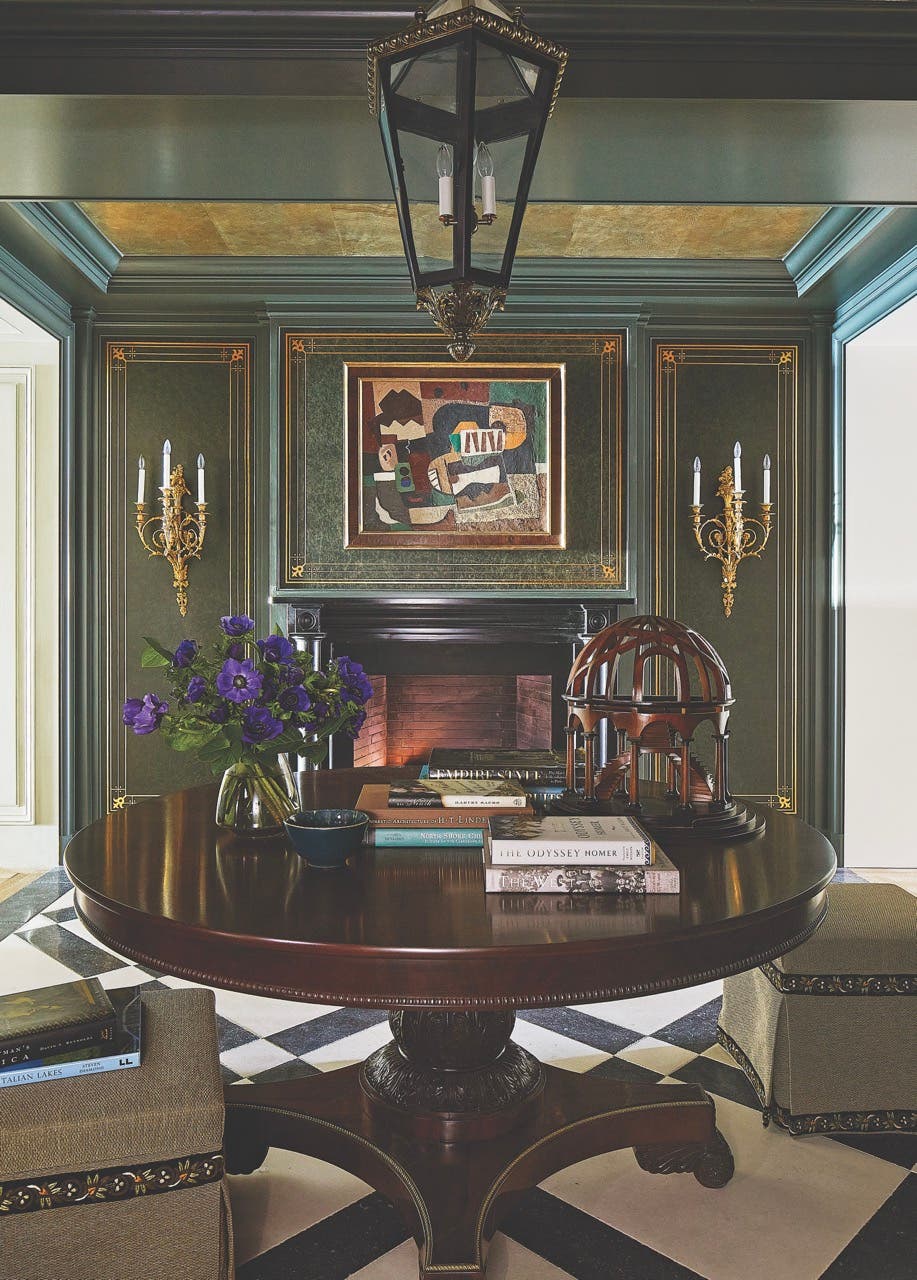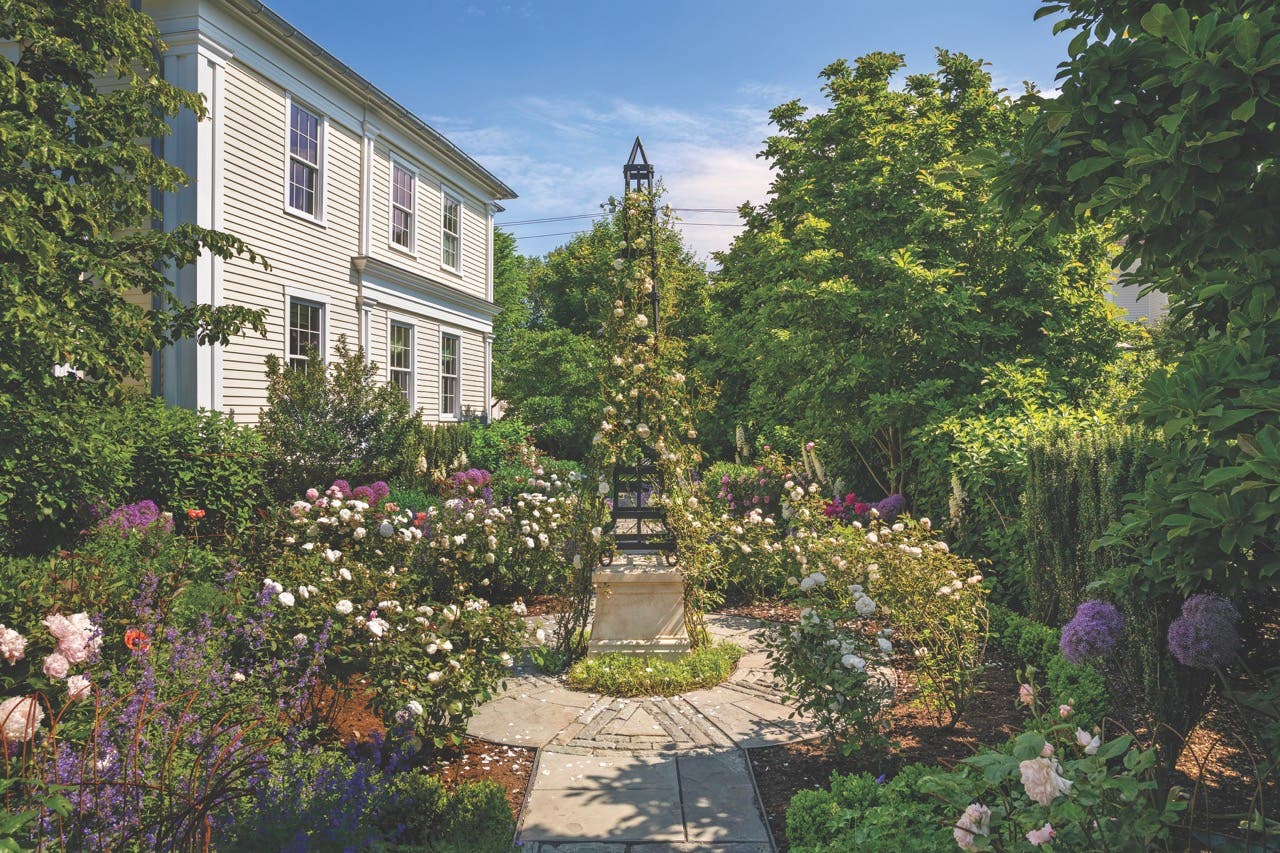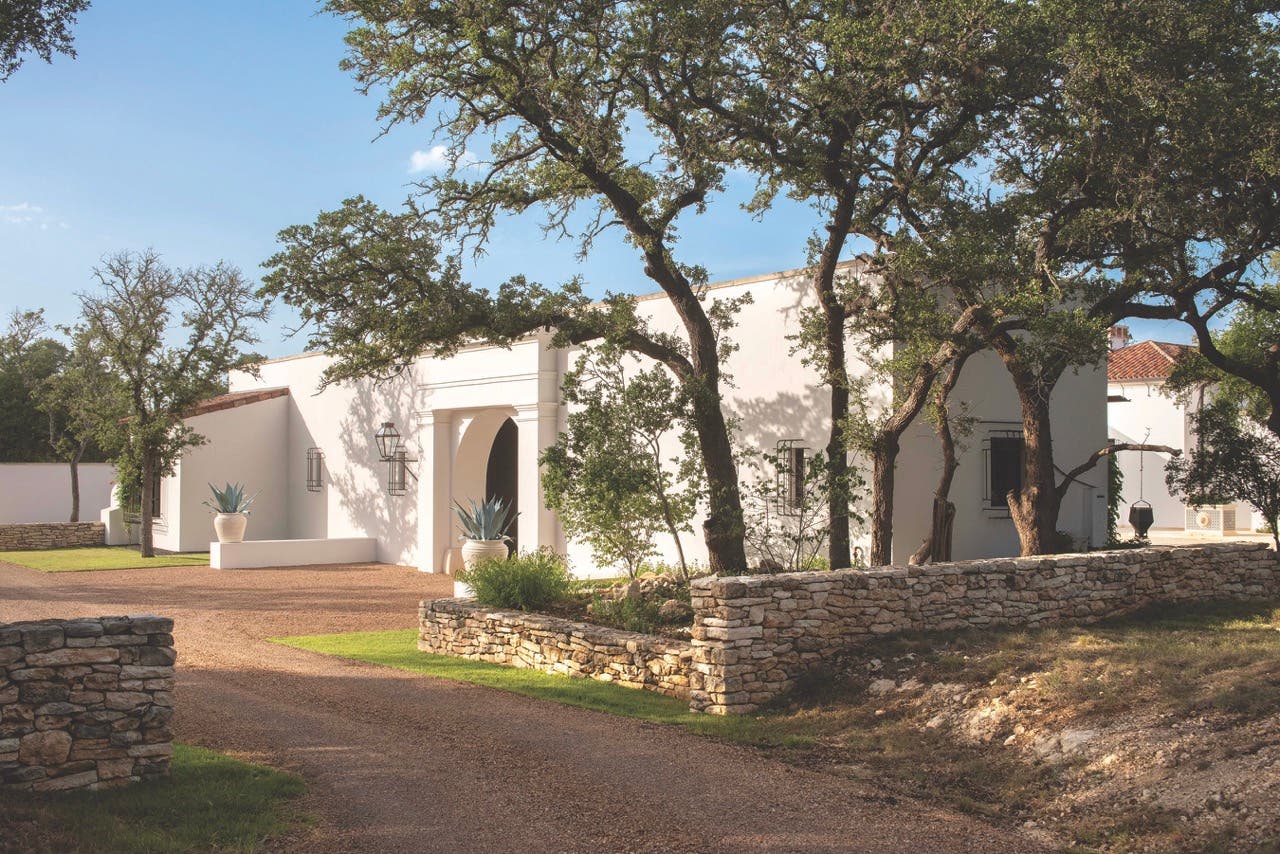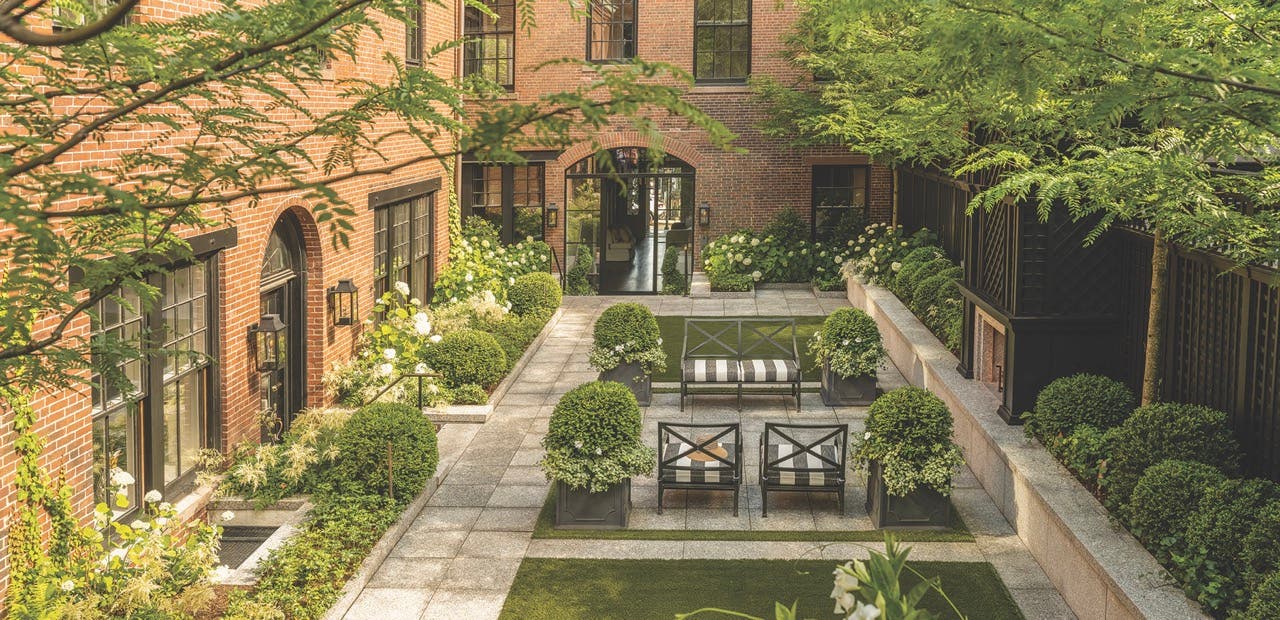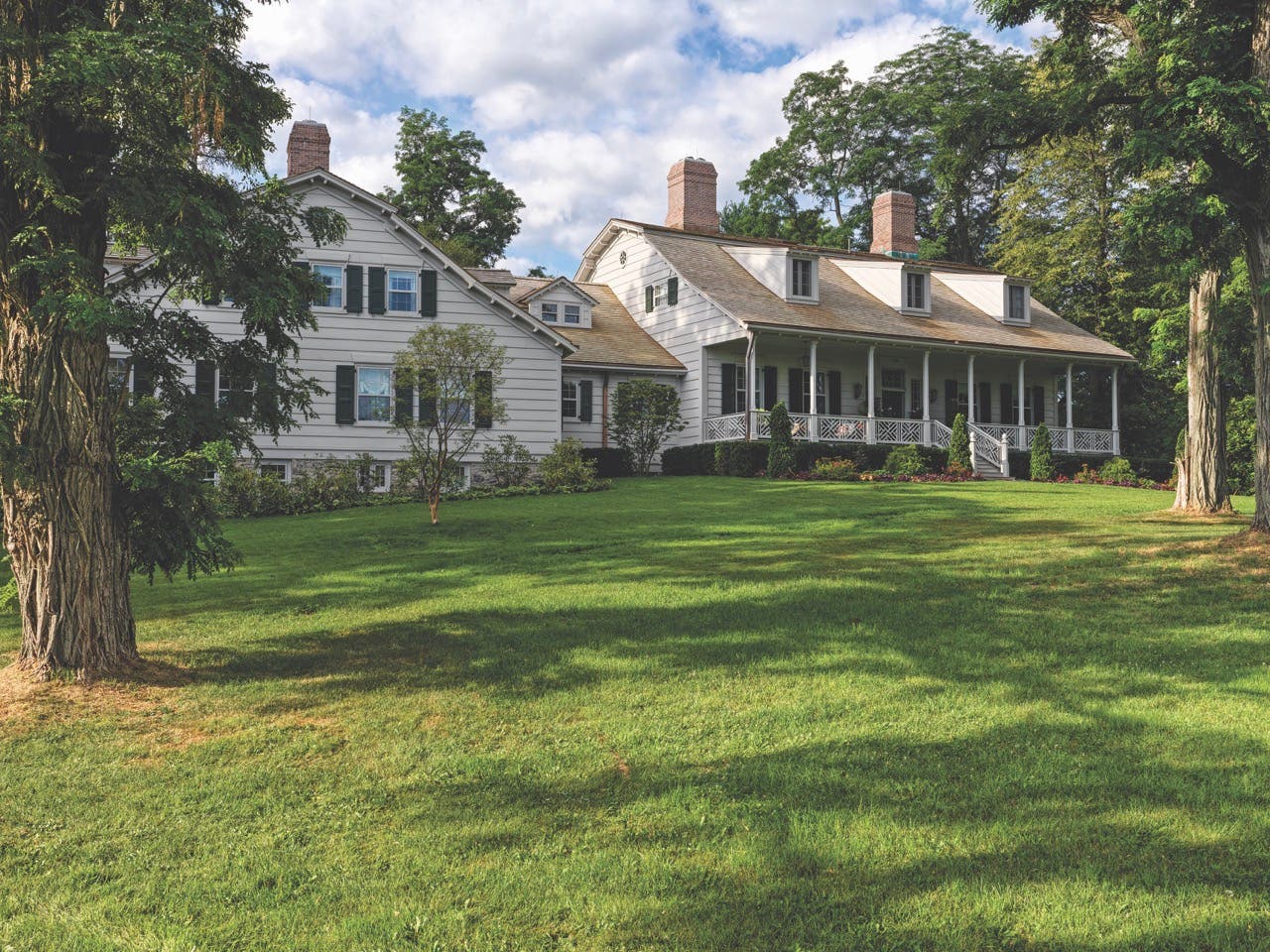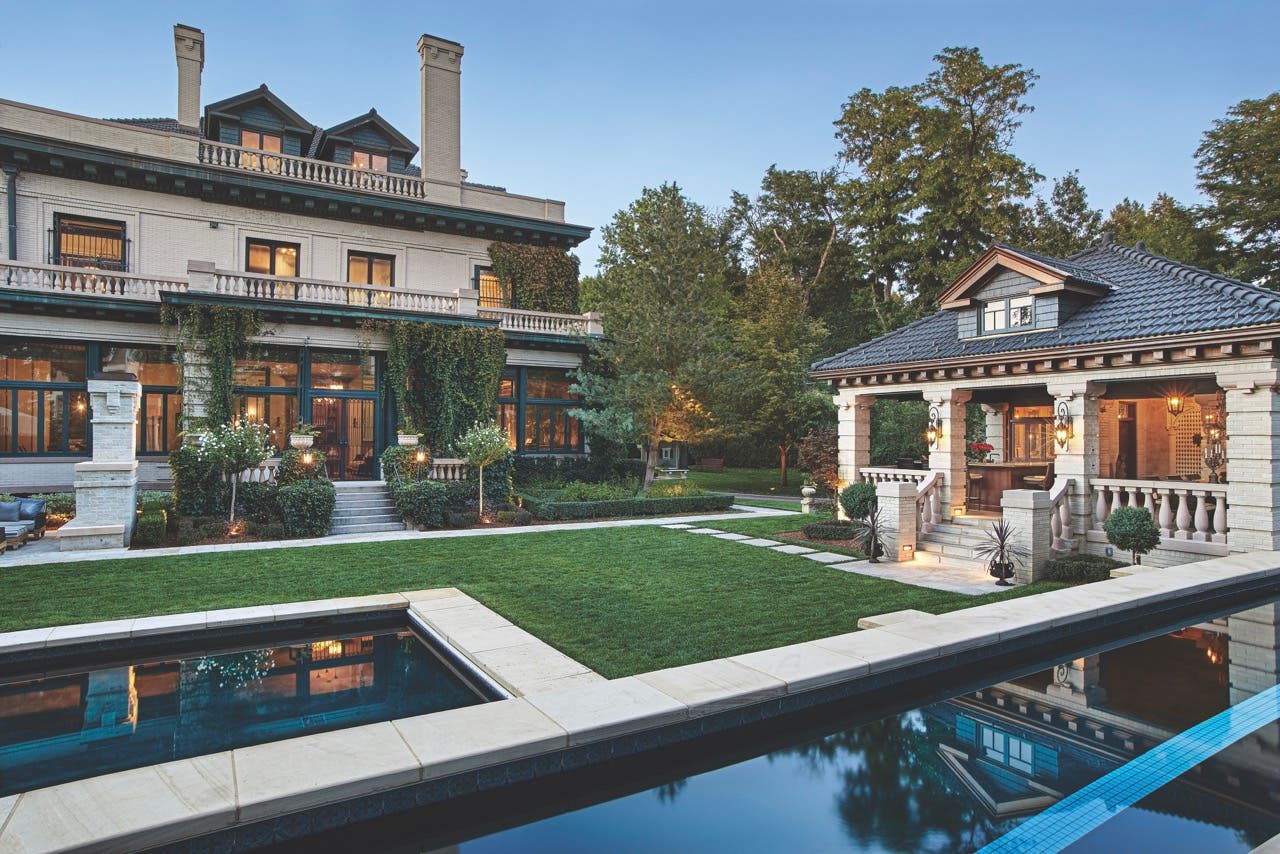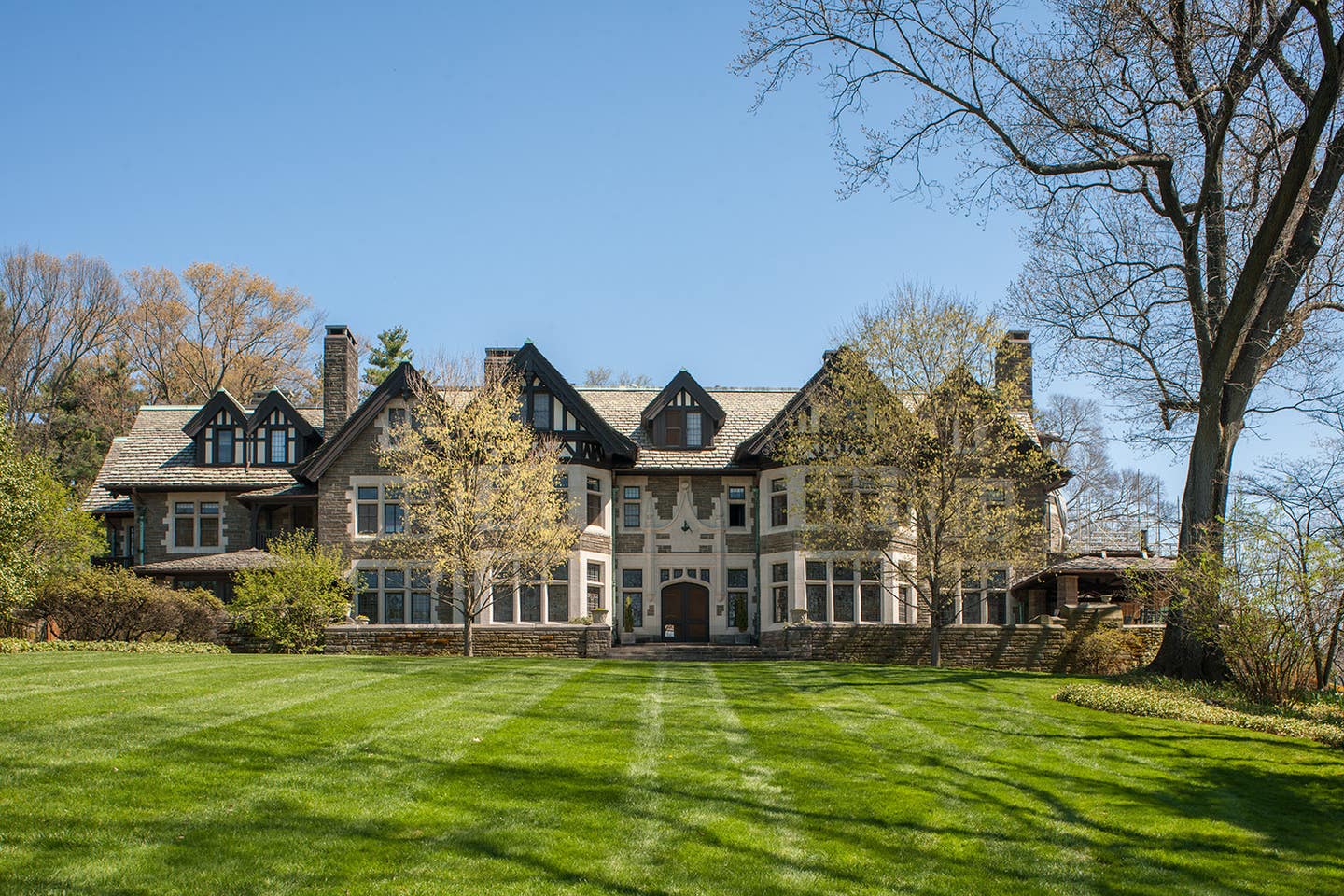
Palladio Awards
John Milner Architects, Inc.: Krisheim
Krisheim, a Jacobean Revival house designed by Boston architects Peabody & Stearns, has been a landmark in Philadelphia’s storied Chestnut Hill neighborhood ever since it was completed in 1912.
As is the case with many historic residences, time has not always been on its side. It remained in the same family until the 1960s, when it was significantly altered for its new role as a church conference center. Then, in the 1980s, it returned to family hands and was reinvented as a nine-unit apartment complex.
Eventually, it passed down to Charles Woodward, whose great-grandparents built the home and several developments in and around Chestnut Hill, and who for the last 31 years has been restoring the 28,000-square-foot L-shaped residence to its original grandeur.
“My family and I are very fortunate to live our lives in the beauty and magic of Krisheim,”
he says. “For me, the restoration was the culmination of a childhood dream. Krisheim will continue to be alive for the foreseeable future, and we are very happy to be her caretakers.”
Woodward’s first project was the landscape, which had been created by Frederick Law Olmsted and his sons a decade prior to the construction of the home to provide a mature setting for the completed house.
For five years, the Woodwards worked with John Milner Architects, which is based in Chadds Ford, Pennsylvania, to restore Krisheim, whose name means Christ’s Home in German, as it had been when Charles’s great-grandparents built it.
The project was done in two phases, allowing Woodward and his wife, Anna, to live in the house during the renovation.
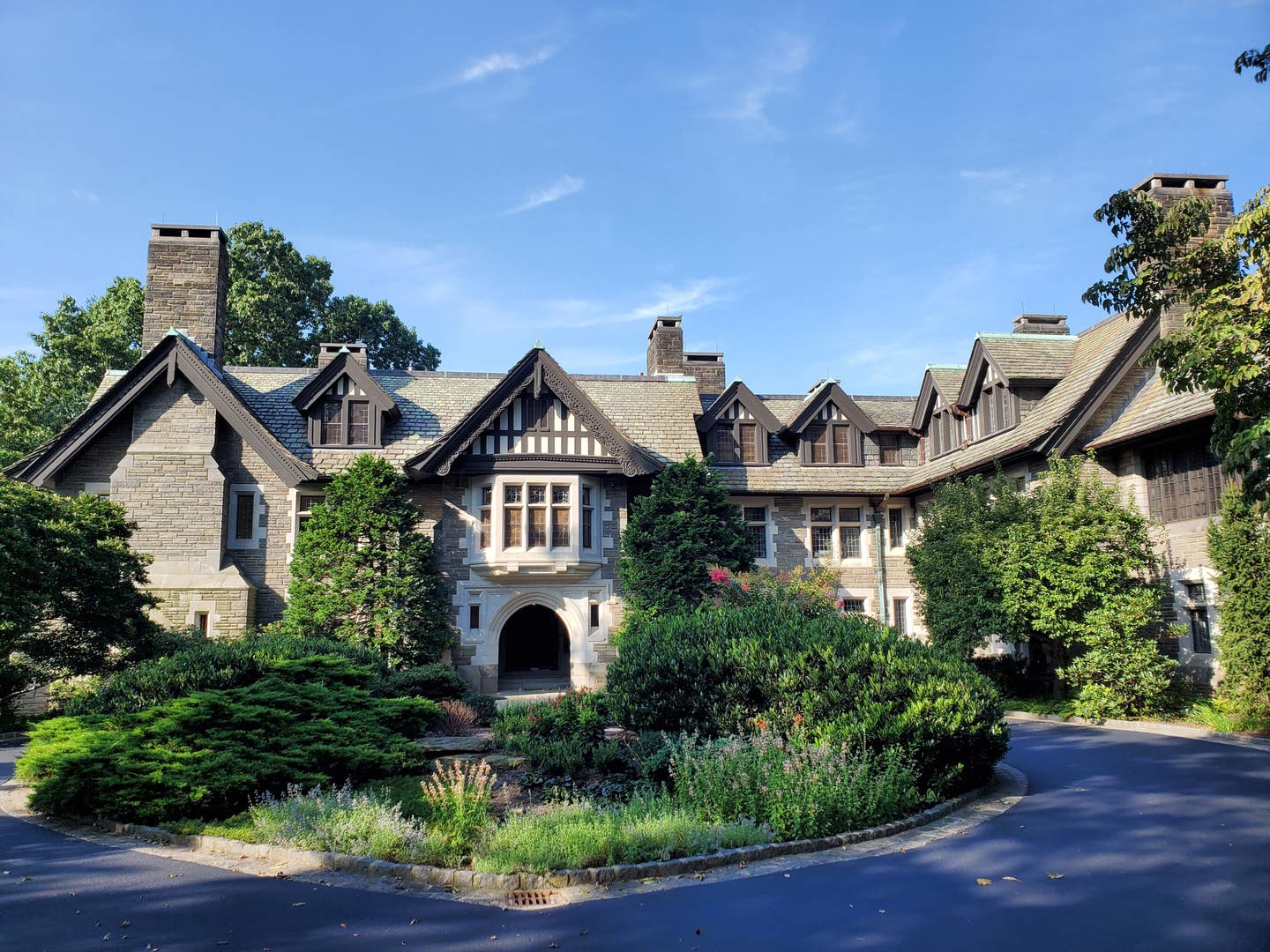

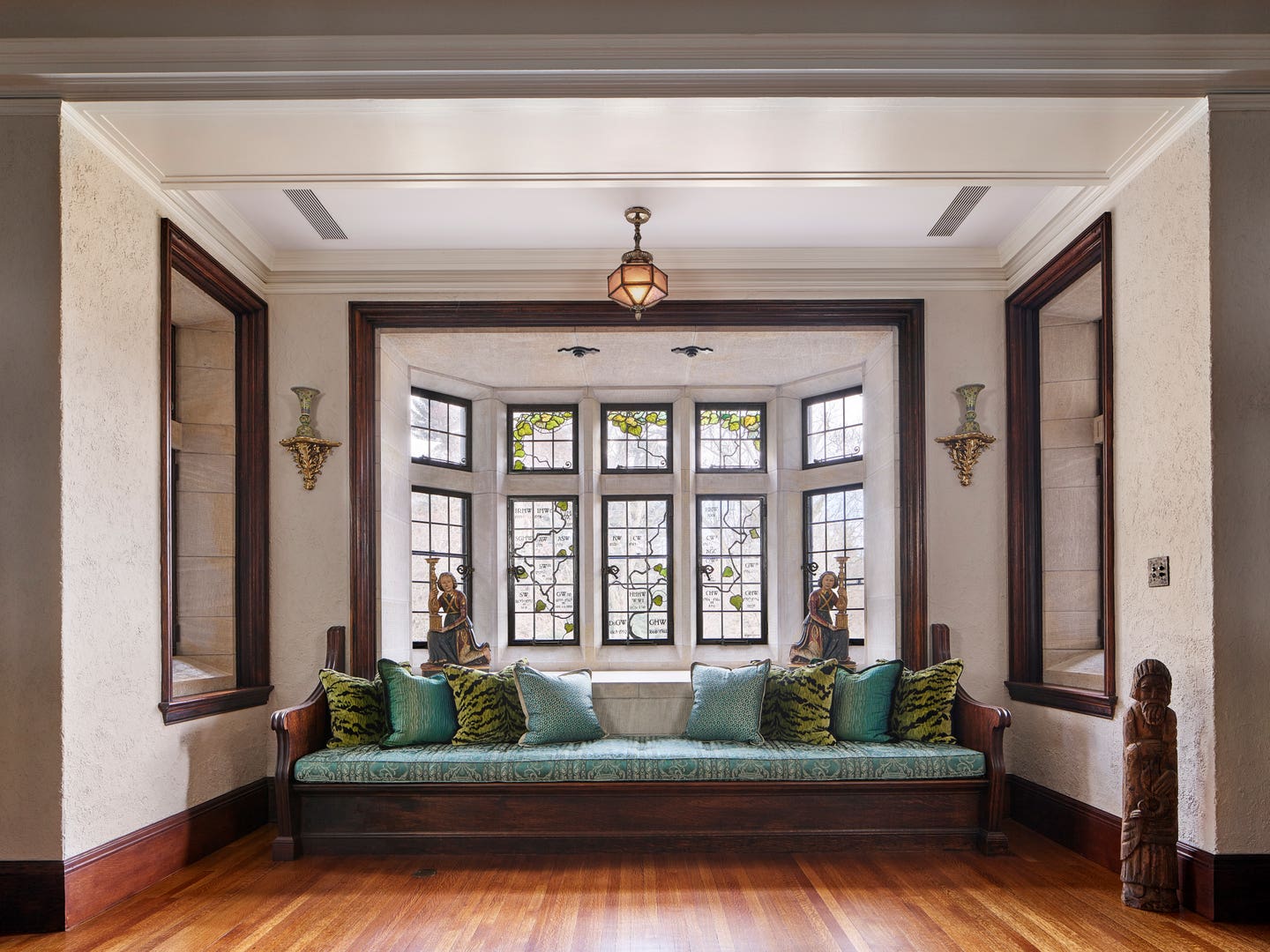
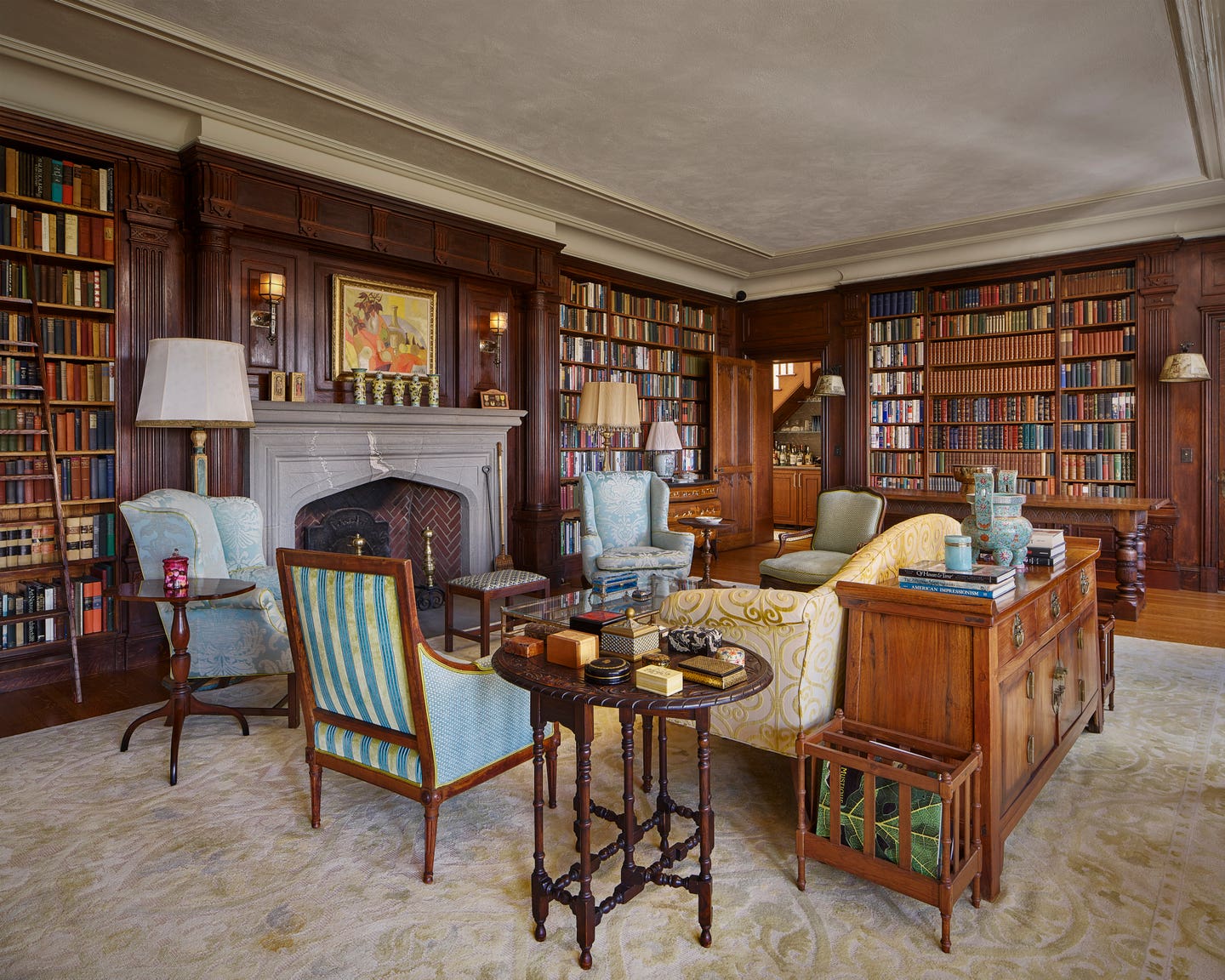

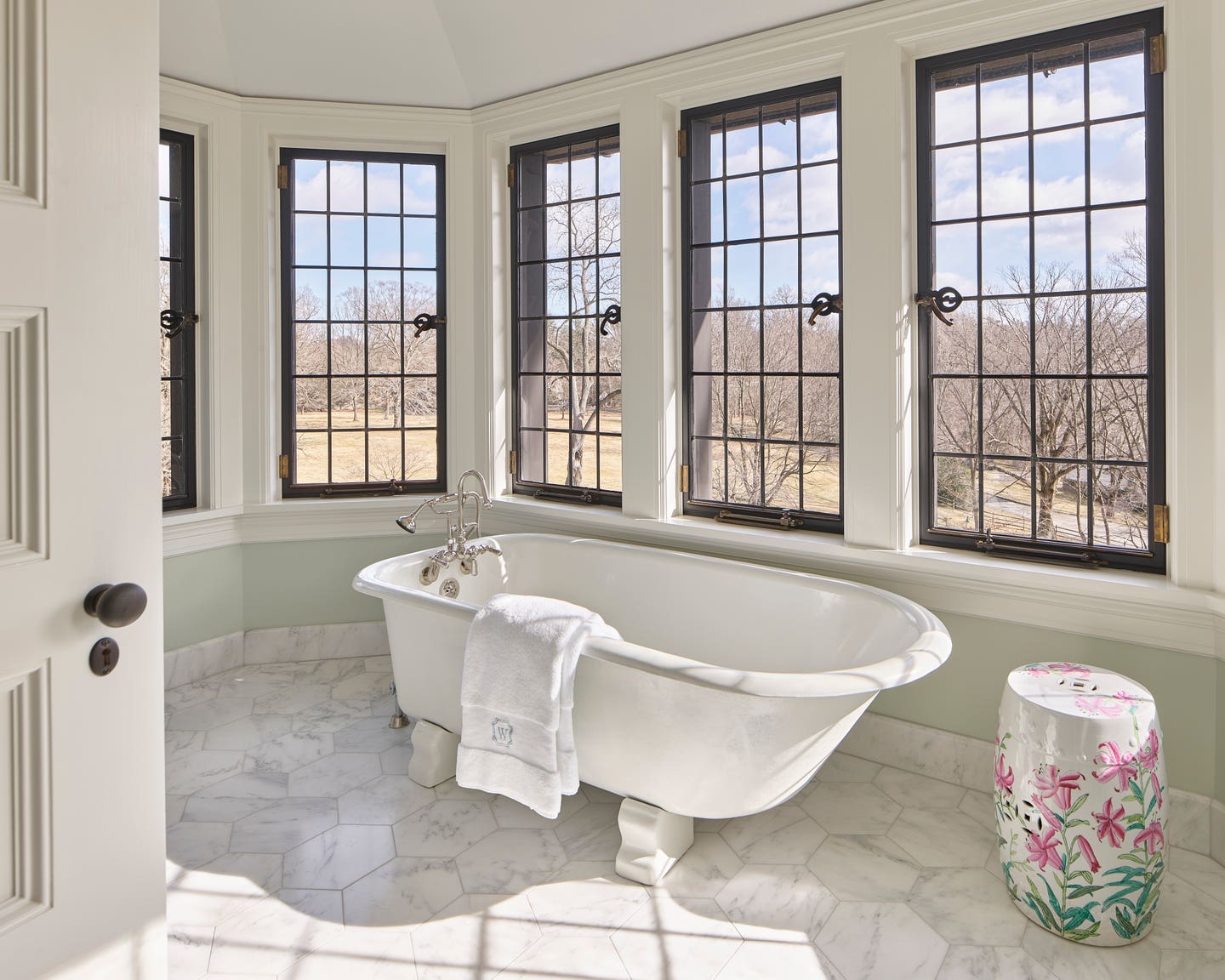
The restoration team included many individuals from the Chestnut Hill community who share a long history with the family. The general contractor has been working on the house for decades; the electrician was called upon to remove wiring installed by his father a generation before; and the roof and chimney contractors have been plying their trades there since the 1980s.
“This truly was a labor of love,” says Justin Detwiler, Milner’s senior project designer. “The homeowners had an incredible passion and a mission to bring the house back to life with no holds barred. We were very fortunate to have a homeowner with this level of commitment.”
The residence has several significant features, starting with its Wissahickon schist and limestone façade. “Wissahickon schist is native to this area of Pennsylvania,” Detwiler says. “It’s a rough metamorphic stone with a high mica content that sparkles in the sun. It frequently was installed as a rubble stone with a rough finish, but at Krisheim, each stone was cut and dressed and finished with a half-inch margin and a scored texture of lines in different directions and patterns.”
The original interiors include metalwork and hardware designed and fabricated by Samuel Yellin; custom tilework by Henry Chapman Mercer and his Moravian Tileworks; and a formal reception room lined with 17th-century oak paneling imported from Europe at the time of construction.
The first order of business was to strip the house of what Detwiler calls “severe alterations,” notably the massive four-story masonry fire-stair tower on the exterior that was added in the 1960s; fire-rated egress partitions in the main stair hall; the apartment subdivisions; and the four-story fire stairway that cut through the side porch.
The mechanical units on the roof, including an enormous industrial-style kitchen exhaust hood, also were removed; new systems were seamlessly integrated into the house.
The Wissahickon schist and limestone were cleaned and selectively repointed, and replacement masonry units were fabricated where necessary to match the original detailing.
The original graduated Vermont slate roofing, including 18-inch-wide shingles that were as thick as 1.5 inches, was removed and reinstalled along with new flat-seam copper roofing and flashing. In addition, hand-hewn, stained oak half-timbering and running trim were restored and replaced with replicas where needed.
Relying upon original early drawings of the residence and what Detwiler calls “the scars of the building that told us where things were,” the team recreated the original footprint and used vintage photographs to determine the placement of furnishings and collections.
It was fortuitous that many of the original elements that were removed in previous renovations had been stored for safekeeping in the basement.
The porch roof’s original shingles, numbered sequentially in chalk when removed in the 1960s, were reinstalled on the second-floor sleeping porch that was reconstructed. And 13 bronze-and- leaded-glass windows were repaired and restored and put back in their proper places.
Historic lighting fixtures were rewired, original plumbing fixtures were reglazed, replated and refurbished, and the fireplaces were restored to working, wood-burning condition.
“We found two original fireboxes buried within the walls,” Detwiler says, “and we had them rebuilt and faced with new Moravian tile based on earlier designs for the home. In the breakfast room, the terra-cotta quarry tile was restored, utilizing 75 percent original tiles and 25 percent new tiles acquired from the original manufacturer in England.”
Original construction methods, which are often considered time-consuming and cost-prohibitive today, allowed the team to restore pieces to exacting standards.
The copper-and-glass skylight that illuminates the third-floor corridor and the stair below was carefully documented, removed, and rebuilt to replicate the historic details. New copper profiles were custom-fabricated, and the historic glass panels were reinstalled in their exact configuration.
The rooms are appointed with much of the original furnishings and art objects, including American Impressionist paintings that were inherited by the homeowner.
From the weathervane over the side porch that depicts figures of the family’s original three sons and daughter to the hand-carved statues on the tall newel posts on the main hall’s staircase that tell the story of the region’s settlement, every element of the residence has its own place in history.
The renovation, Detwiler says, is still very much a work in progress. “In a grand home like this, there is always work to be done, so the project will never quite end.”
KEY SUPPLIERS
ARCHITECT
John Milner Architects www.johnmilnerarchitects.com
GENERAL CONTRACTOR
Dennis F. Meyer Inc.
MASONRY
Joseph Manero and Sons
CUSTOM METALWORK
Holzman Iron Studio
LEADED-GLASS RESTORATION AND FABRICATION
Beyer Studio
ARCHITECTURAL CONSERVATION OF WOOD AND TILE
Materials Conservation
CUSTOM MILLWORK
Meyer Woodworks
KITCHEN CABINETS
Fiorella Woodworking
ELECTRICAL
John J. McGettigan
PLUMBING, HEATING AND COOLING
McLoughlin Plumbing, Heating, Cooling
TILE INSTALLATION
Opus Tile and Stone
TILE
Moravian Pottery and Tileworks
STONE INSTALLATION
Michael Addesso Marble and Granite World
DECORATIVE PAINTING
Hugh Luck, Pine Street Studios
WALLCOVERINGS
Hampshire Wall Coverings



